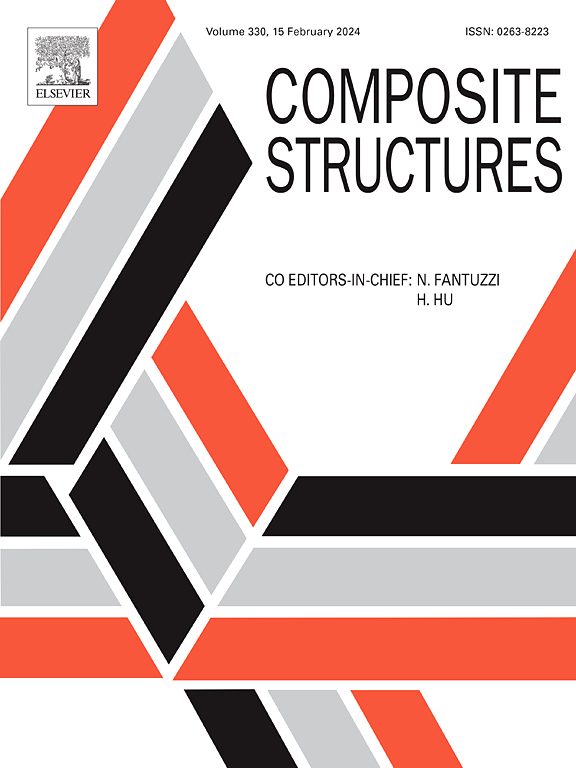Effects of hygrothermal aging and re-drying on the translaminar fracture toughness of CFRP
IF 6.3
2区 材料科学
Q1 MATERIALS SCIENCE, COMPOSITES
引用次数: 0
Abstract
The translaminar fracture of fiber-reinforced composites is vital in many applications, and can be influenced by hygrothermal environments in service. These effects are however not sufficiently well understood in the literature, especially the translaminar fracture mechanism of hygrothermal effects and its reversibility still need to be revealed. Thus, a systematic study of the hygrothermal and re-drying effects on the translaminar fracture toughness was carried out through compact tension tests, with the corresponding damage mechanisms investigated by the scanning electron microscope. The experimental results indicated a significant decrease in apparent stiffness with a minimal crack propagation after hygrothermal aging, while dried and re-dried specimens maintained stiffness and facilitated multiple stable crack propagations. In addition, the R-curves showed greater stability in dried and re-dried conditions compared to hygrothermal conditions, with normalized stable translaminar fracture toughness of 1.0, 1.68, and 1.5, respectively. Finally, the fracture surface analysis revealed distinctive toughening mechanisms under different conditions, highlighting significant fiber bundle pull-out under hygrothermal aging. In addition, the quantitative study of translaminar fracture toughness can serve as a basis for fiber failure criterion and provide model input for the simulation and evaluation of the effects of hygrothermal aging on CFRP performance.
求助全文
约1分钟内获得全文
求助全文
来源期刊

Composite Structures
工程技术-材料科学:复合
CiteScore
12.00
自引率
12.70%
发文量
1246
审稿时长
78 days
期刊介绍:
The past few decades have seen outstanding advances in the use of composite materials in structural applications. There can be little doubt that, within engineering circles, composites have revolutionised traditional design concepts and made possible an unparalleled range of new and exciting possibilities as viable materials for construction. Composite Structures, an International Journal, disseminates knowledge between users, manufacturers, designers and researchers involved in structures or structural components manufactured using composite materials.
The journal publishes papers which contribute to knowledge in the use of composite materials in engineering structures. Papers deal with design, research and development studies, experimental investigations, theoretical analysis and fabrication techniques relevant to the application of composites in load-bearing components for assemblies, ranging from individual components such as plates and shells to complete composite structures.
 求助内容:
求助内容: 应助结果提醒方式:
应助结果提醒方式:


